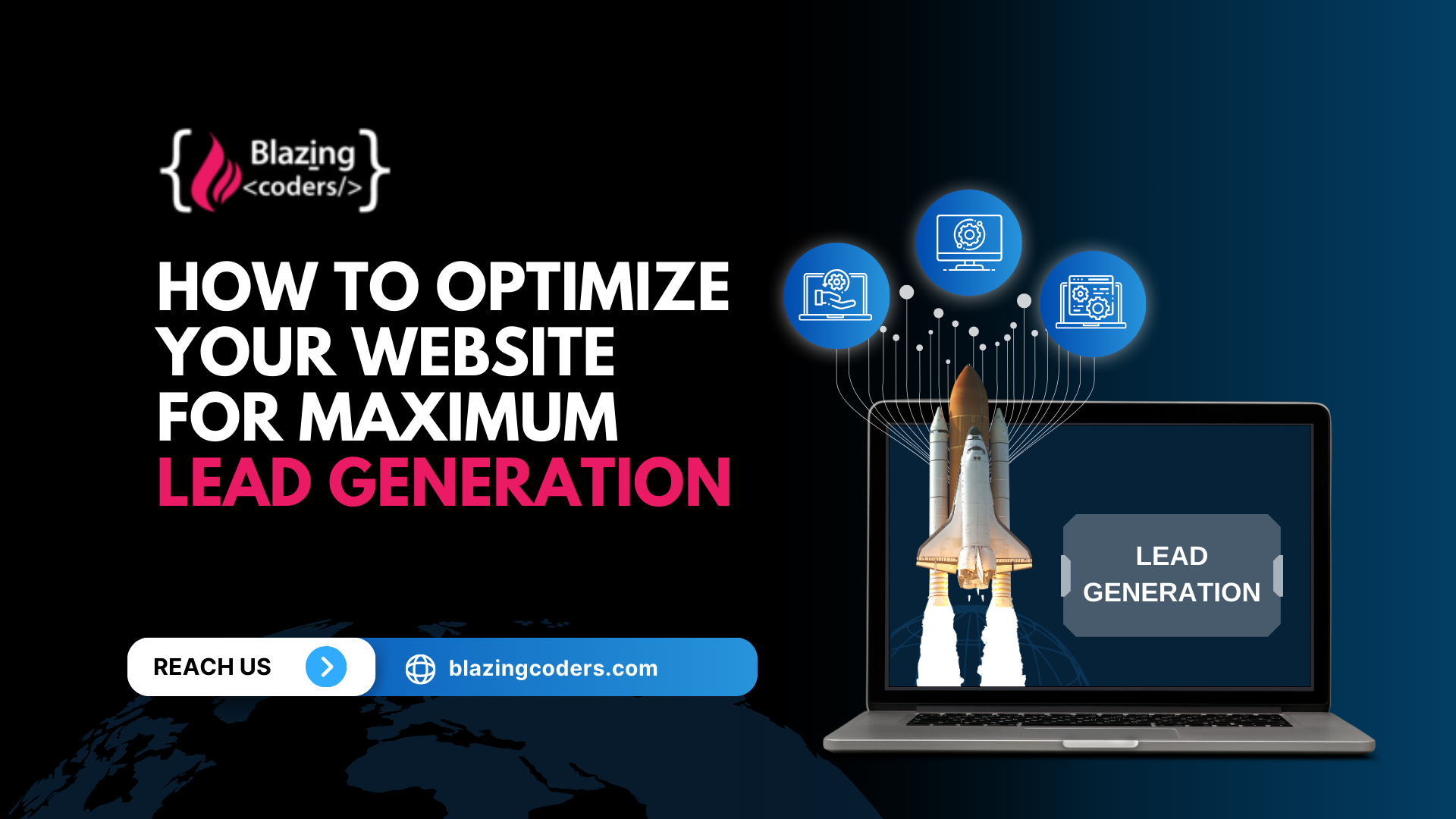PHP CodeIgniter Count Rows in Table
The most effective method to tally question results and number of columns in table in codeigniter. On occasion you might be keen on knowing the quantity of lines in a table as opposed to bringing the
Read More
When properly optimized, a website is a powerful tool for generating leads and is more than simply a digital shopfront. Making your website perform for you around-the-clock is more important than simply having one in today's digitally-first environment if you want to attract potential clients. It's time for a redesign if your website isn't converting visitors into leads. Let's dissect the key tactics that will guarantee your website attracts excellent leads.
1. Craft a High-Converting Landing Page As they say, "You never get a second chance to make a first impression." Your landing page is the first impression. A landing page with a high conversion rate should be aesthetically pleasing, simple to use, and laser-focused on converting visitors. Utilize eye-catching images, eliminate superfluous distractions, and incorporate a powerful call-to-action (CTA) that directs users to the following action.
2. Optimize for Speed and Mobile-Friendliness Potential leads are already being lost if it takes more than three seconds for your website to load. To improve user experience and lower bounce rates, speed optimization is essential. To improve site performance, employ a content delivery network (CDN), take advantage of browser caching, and compress pictures. Furthermore, it is imperative to have a mobile-responsive design because mobile devices account for more than 60% of all web traffic. Potential leads may be sent directly to your rivals by a sluggish or poorly optimized mobile website.
3. Leverage the Power of SEO The secret to drawing in organic traffic that converts is search engine optimization, or SEO. Researching keywords is the first step in focussing on high-intent search enquiries. Make sure that the headers, URLs, meta descriptions, and content of your website are all optimised to match these keywords. Use internal linking techniques to increase visitor engagement and update content frequently to keep it relevant to search engines. The higher your website ranks, the more potential leads you attract.
4. Use Compelling Calls-to-Action (CTAs) A CTA ought to serve as a digital roadmap that points users in the direction of conversion. Use captivating and action-oriented language like "Claim Your Free Consultation" or "Download Your Exclusive Guide Now" in place of cliched terms like "Submit" or "Click Here." In order to maximise interaction, strategically place calls to action (CTAs) at the conclusion of service pages, within blog entries, and above the fold.
5. Offer Valuable Lead Magnets When someone receives something of value in exchange, they are more likely to give their contact information. eBooks, whitepapers, case studies, and unique industry insights are examples of lead magnets that encourage visitors to provide their email addresses. Make sure the lead magnet speaks to your target audience's issues and is pertinent to them.
6. Implement Live Chat & Chatbots Lead conversion rates can be considerably increased by instant communication. An AI-powered chatbot or strategically positioned live chat feature can interact with visitors in real time, responding to their enquiries and assisting them in taking action. In order to deliver a smooth user experience, automated chatbots can qualify leads, set up appointments, and offer tailored responses.
7. Utilize Pop-ups Strategically Well-designed exit-intent pop-ups or time-triggered pop-ups can be quite successful at capturing leads, even though too many pop-ups might be bothersome. Provide a free trial, a discount, or a useful resource in return for an email subscription. Make sure pop-ups are easy to utilise, unobtrusive, and offer the visitor something of value.
8. Build Trust Through Social Proof Customers have greater faith in other customers than in brands. To build credibility, include case studies, user-generated content, and testimonials. On your website, prominently display client logos, industry credentials, and trust badges. Visitors are more willing to interact with your brand when they see examples of actual success.
9. Optimize Forms for Simplicity Your conversion rates will increase if your lead capture forms are brief and easy to use. Eliminate extraneous fields and only request the most important ones. Because they foster a sense of commitment and progress, multi-step forms frequently perform better than lengthy, single-page ones. To find what works best, try out various form designs and positions.
10. Create High-Value Content A key component of lead generation is content marketing. Post excellent blog entries, videos, infographics, and manuals that tackle the problems of your readers. Make sure that all of your material is search engine optimised and has a compelling call to action (CTA) that encourages readers to download, subscribe, or get in touch with your team. By establishing your business as an authority, a well-executed content strategy boosts conversions and trust.
11. Integrate Email Marketing for Lead Nurturing After a visitor becomes a lead, nurturing comes next. One of the best strategies to keep people interested is still email marketing. To advance leads along the sales funnel, send drip campaigns, follow-up emails, and customised emails. Segmentation is essential; make sure your emails are customised to the interests and behaviours of particular users.
12. Leverage A/B Testing for Continuous Optimization What is effective now might not be tomorrow. You can experiment with many website features, like CTA positioning, headline variations, graphics, and form lengths, by regularly conducting A/B testing. Your website can be improved over time for higher lead conversions by analysing the outcomes.
13. Implement Retargeting Strategies Even if not every visitor converts on their first visit, they are still potentially lost. By presenting pertinent offers on many platforms, retargeting advertisements aid in bringing back past visitors. This raises the likelihood that cold visits will become warm leads and maintains your brand at the forefront of consumers' minds.
14. Monitor and Analyze Performance Metrics Optimising lead creation requires data-driven decision-making. Track visitor behaviour, conversion rates, and engagement trends with tools like Google Analytics, heatmaps, and CRM connectors. By discovering bottlenecks, you may implement tactical changes that optimise lead conversions.
Final Thoughts The foundation of your digital marketing campaigns is your website, thus making it lead-generation-friendly is revolutionary. Every element is essential, from improving SEO and user experience to utilising automation and tailored interaction. You may make your website a lead-generating tool that consistently supports business expansion by putting these tactics into practice. The time has come to act and turn inactive website visitors into devoted clients!
Request a FREE Business Plan.
 +91 ▼
+91 ▼ The most effective method to tally question results and number of columns in table in codeigniter. On occasion you might be keen on knowing the quantity of lines in a table as opposed to bringing the
Read More
In today's competitive digital landscape, businesses are constantly looking for the best way to drive traffic, generate leads, and increase revenue. Two of the most powerful online marketing strat
Read More
Landing your first job as a software developer can be challenging, but with a structured plan, you can ace your coding interview. This 30-day preparation plan will help freshers build problem-solving
Read More